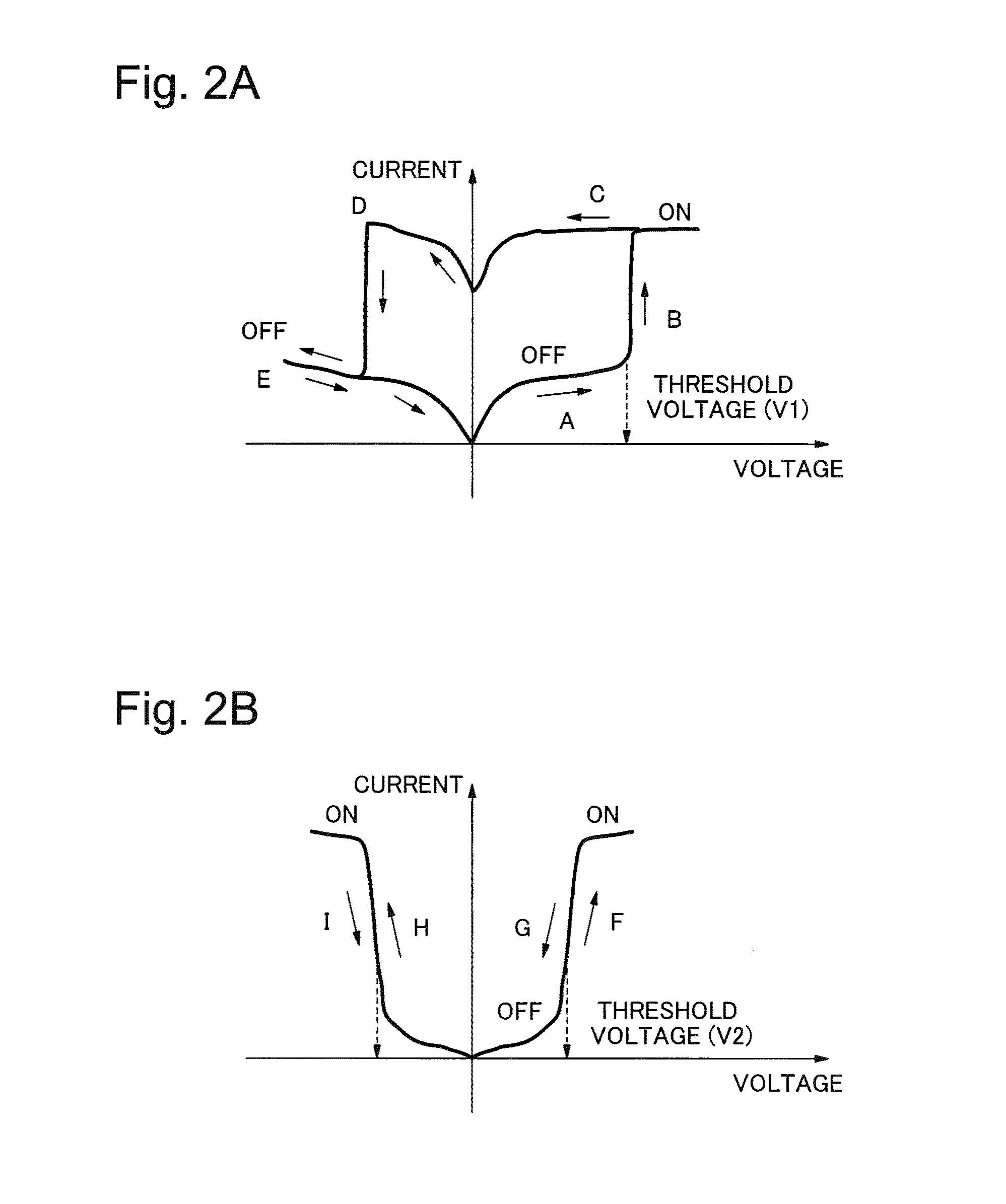Switching element and method for fabricating semiconductor switching device
a switching device and switching element technology, applied in semiconductor devices, digital storage, instruments, etc., can solve the problems of embedded memories, unsuitable for being embedded in logic lsi, and loss of stored information of edrams, so as to prevent false writes and false operations, the effect of improving reliability
- Summary
- Abstract
- Description
- Claims
- Application Information
AI Technical Summary
Benefits of technology
Problems solved by technology
Method used
Image
Examples
first exemplary embodiment
[0120]As illustrated in FIG. 3, in a switching element, a first variable resistance element 101 includes a first electrode 101a, a first variable resistance film 101b and a second electrode 101c, and a second variable resistance element 102 includes a first electrode 102a, a second variable resistance film 102b and a second electrode 102c. A rectifier 103 includes a first electrode 103a, a rectifying film 103b and a second electrode 103c.
[0121]Each of the first electrodes 101a, 102a includes an active electrode which supplies metallic ions. The variable resistance films 101a, 102b include a solid electrolyte layer which conducts ionized metal. Each of the second electrodes 101c, 102c includes an inactive electrode that does not react with the metallic ions.
[0122]The rectifying film 103b may be a film such as Poole-Frenkel insulating film, a Schottky insulating film, or a threshold-switching volatile variable resistance film.
[0123]Next, a factor that minimizes false writes and false...
second exemplary embodiment
[0128]FIG. 4 illustrates a device structure in which inactive electrodes are interconnected. The device structure includes two bipolar solid electrolyte switches, and solid electrolytes 402 of variable resistance elements described above are interconnected each other, inactive electrodes 403 of the variable resistance elements are interconnected each other, rectifying elements 404 are interconnected each other, control electrodes (third electrodes) 405 are interconnected each other. Signals are input and output through two first electrodes (a first active electrode 401a, a second active electrode 401b) that are not interconnected.
[0129]To place the switching element in the on state (low-resistance state), a voltage is applied to the control electrode (third electrode) 405 to form metal bridges 406a, 406b from the first active electrode 401a and the second active electrode 401b, respectively, in the solid electrolyte 402. As a result, the first active electrode 401, the inactive elec...
third exemplary embodiment
[0131]A third exemplary embodiment of the present invention will be described next. In the third exemplary embodiment, variable resistance elements (of the first exemplary embodiment) each including a control electrode (third electrode) are arranged in an array and used as a switch (crossbar switch), thereby the switch element area can be reduced.
[0132]FIG. 5 is a diagram illustrating a configuration of the third exemplary embodiment. A configuration in which variable resistance elements are arranged in an array to form a crossbar switch is illustrated in FIG. 5 as an equivalent circuit.
[0133]Complementary variable resistance elements achieve an improved reliability against disturbance when the complementary variable resistance elements are place in the off state, because: (1) voltage is divided between two variable resistance elements and (2) bipolar variable resistance elements are connected in series in different set voltage directions, as illustrated in FIG. 5. Furthermore, the ...
PUM
 Login to View More
Login to View More Abstract
Description
Claims
Application Information
 Login to View More
Login to View More - R&D
- Intellectual Property
- Life Sciences
- Materials
- Tech Scout
- Unparalleled Data Quality
- Higher Quality Content
- 60% Fewer Hallucinations
Browse by: Latest US Patents, China's latest patents, Technical Efficacy Thesaurus, Application Domain, Technology Topic, Popular Technical Reports.
© 2025 PatSnap. All rights reserved.Legal|Privacy policy|Modern Slavery Act Transparency Statement|Sitemap|About US| Contact US: help@patsnap.com



